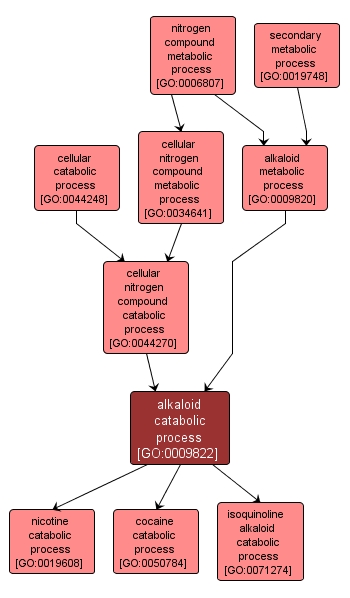| Desc: |
The chemical reactions and pathways resulting in the breakdown of alkaloids, nitrogen containing natural products not otherwise classified as peptides, nonprotein amino acids, amines, cyanogenic glycosides, glucosinolates, cofactors, phytohormones or primary metabolites (such as purine or pyrimidine bases). |














